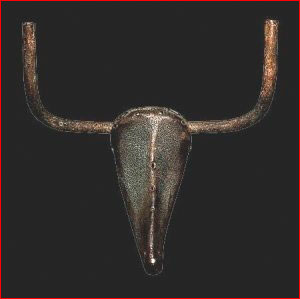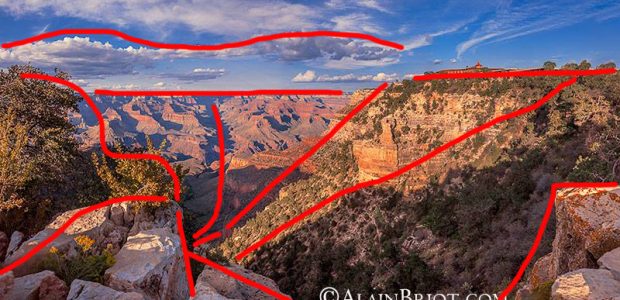Can’t See The Pictures for the Pixels
Good morning! Just a short note this morning, as I’m busy — well, distracted anyway — by the coming of America’s annual homage to its Christian heritage.
Despite being fundamentally jaded about the psychology of amateur photographers who are expert shoppers, I’ve been lurking about various forums recently, reading opinions about the new Nikon D2H, which is just now shipping to consumers and beginning to be reviewed.
Whenever a much-awaited new camera appears, there seems to appear along with it an initial gush of excitement, followed by a more prolonged period of hand-wringing and existential anxiety, as people whose photographic identities are tied to what they own begin to ferret out the perceived or agreed-upon weaknesses of the device.
Not for the consumer is the old art-school attitude that a good artist can make art out of anything, including, literally, junk. Duchamp made art out of nothing, seemingly ("It is art because I say it is," he said), and Picasso used to play virtuoso tricks by which he discovered figuration in the most mundane of objects, sometimes merely rearranging things to transform something pedestrian into something delightful.

Pablo Picasso,Tête de taureau, bronze casting from bicycle saddle and handlebars.
Musée Picasso, Paris.
But if your identity is tied into mere possession, and not pictures, then you can be devastated by the scorn of someone who finds fault in your device. How else to explain the furious and frenetic argumentation online aboutwhich camera is better?
Whence those cavils of which you speak?
Agreement seems universal that the D2H is a masterpiece of ergonomics, proportion, and responsiveness. Where the cavils creep in is in the discussions of image quality. Too much noise at high ISOs? Too few pixels? Fret, fret.
I wonder sometimes if people can’t see the forest for the trees — or the pictures for the pixels, in this case. Take a look atthis postby "digislr" in dpreview’s Nikon SLR Forum.
He explains: "The D2H images have more vibrant color, sharper details and just have a quality about them that the others do not."
Well, yes. I agree. They do. Too much noise? Who cares? Too few pixels? Fuji just came out with a 20-megapixel digital back for the 680. It costs $22,000. Buy one, and knock yourself silly with mega megapixels, sez me.

Get the gestalt: Here’s a picture I mucked about with in Photoshop to make it resemble a tempera painting.
I used it as the title page of a book. Goes to show, though, don’t it, that detail doth not a picture make.
We need to remind ourselves, I think, to look at pictures holistically at least some of the time. Take in the whole thing; be open to its effects. Get the gestalt. Do I care if a treasured Dorothea Lange picture is a wee skosh out of focus? If a radical Rodchenko has poor tones? If I can see grain in a Kertész? Believe it or not, I don’t. I simply assume that the artist has taken these properties into account, and has vetted the picture anyway. That’s good enough for me.
What goes around….
I’m often reminded of the many years prior to the maturation of digital when hopeful digiphiles would show me the latest output while asserting, pleadingly, that it was "photo-quality" or "good enough" or "beautiful." Being stubbornly of my own mind, I’d have to say, nope, nope, nope. Ain’t there yet.
Well, it’s there now. And the irony is that I now have to do the opposite of what I used to. When certain cameras enable beautiful output — output that convinces, that permits concentration on the picture itself, that truly is good enough, that is usable by art photographers without qualification — I seem to have to reassure people that it’s okay to like what their eyes tell them is excellent.
Anyway, I just love what I see from the D2H. Maybe some of the fine points admit of criticism…technically. Granted, there’s no harm in discussing the fine points, if that’s what people find fun. But the pictures have a rightness, a coherent beauty, that I find artistically convincing. Be real. Look at those great pics.
Trees are interesting, in other words. But every now and then we have to step back and see the forest, too, in all its glory.
— Mike Johnston
WEB PAGE UPDATE: NEW!!! We’ve just posted a large LINKS PAGE on my website athttp://www.37thframe.com. Although it has plenty of photographic content (listed first), it is also, as you might expect, a trifle (ahem) esoteric — in case you need a list of the custom cuemakers in Wisconsin, for example, or a site where you can find a $15,000 book. I’ll be adding more to the links page as time passes, too. WARNING: there is some political content. I put it at the end, so those who might wish to skip it can do so.
BOOK UPDATE: The book is driving mecrazy. I’ve experienced just about every production delay I could ever imagine, and a few I couldn’t. I’ve been hoping for a date certain for the first shipment, but hoping, alas, will not bring the ship in — I’ve expected news any day now for a large number of days now. Isincerelyapologize to everyone for the long wait, and just as sincerely thank you for your patience. It’s still, yes, coming, and I have all the orders arranged in strict chronological sequence, so they will be filled as they were received. On the good side? I’ve learned a lot — a whole lot — from this experience. Book #2, calledThe Lens Image and the Light-Tight Box, about cameras and lenses, is 90% written, laid out, and ready to go. That one, however, I will not announce until I have stacks of ’em in hand, ready to be mailed. The third book in the series will be about strategies and exercises to help people become better photographers, no matter what kind of camera they use, but taking advantage especially of the wonderful learning opportunities afforded by digital cameras and workflows. The fourth book will be calledClassic 35mm Photography. It’s a book I’ve been working on for more than ten years now. I hope not to have to self-publish that one, for reasons of reproduction quality, but I’m prepared to do so if I have to.
NEWSLETTER UPDATE: Some people, mainly overseas, have still not gotten Issue #5, and, to be perfectly honest, I cannot for the life of me figure out what went wrong. The lost postage has been a big hit. If you have NOT gotten Issue #5 yet, please expect it to come packaged with Issue #6 in January or February. Also, a small number of subscribers have gone a very long time without getting anything. That SNAFU I did figure out, and hope to be putting right soon. Meanwhile, back at the ranch, #6 is just about done, and it is a lot of fun. It will, with any luck, be the last issue without pictures. But the way this tends to go, please don’t hold your breath or you’ll turn blue….
See Mike Johnston’s website atwww.37thframe.com. Also, check out his monthly column in the BritishBlack & White Photographymagazine! (Usually available at Barnes & Noble bookstores.)
Want to read more? Go to the SMP Archives
Please support this column by subscribing toThe 37th Frame,Mike Johnston’s print newsletter for photographers.
Mike Johnstonwrites and publishes an independent quarterly ink-on-paper magazine calledThe 37th Framefor people who are really "into" photography. His book,The Empirical Photographer, has just been published.
You can read more about Mike and findadditional articlesthat he has written for this site, as well as aSunday Morning Index.
You May Also Enjoy...
How This Photograph Was Made: Grand Canyon Daytime Part 2: Let’s talk about composition
Good composition is like a suspension bridge - each line adds strength and takes none away. Robert Henri 1 - Introduction This is part two
The Most Important Strategies For Building Your Future-Proofed Portfolio
FacebookTweet Landscape Photography: The most important strategies for building your future-proofed portfolio To quickly build a portfolio of landscape images that you are happy with


